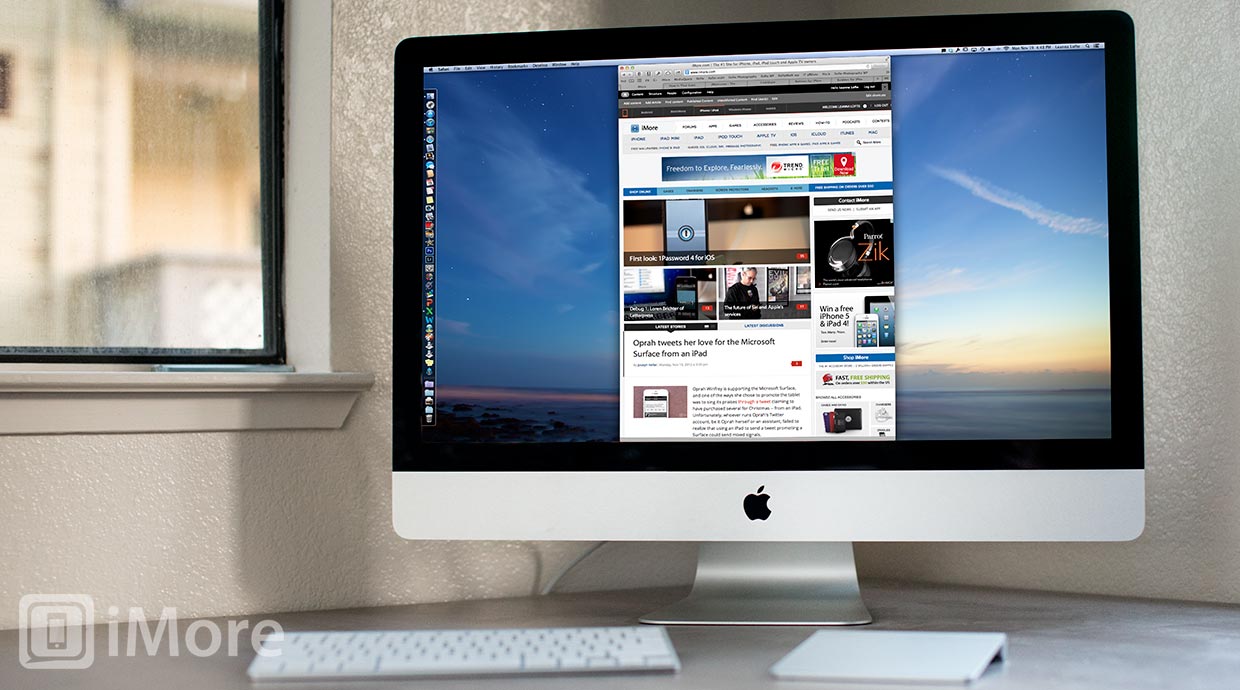Who needs a Mac Pro when they can get an iMac?

In previous editorials I've shared my opinion on the state of the Mac Pro and what the next Mac Pro could have inside. Now it's time to ask a more fundamental question: Do we need the Mac Pro at all? After all, isn't the iMac the...well...pro desktop Mac?
Blurring the line
Topping out with a a $2000 price tag before you get fancy, it's easy to look at the 27-inch iMac and conclude that it is a suitable replacement for a Mac Pro, at least for most Mac users.
Inside the high-end 27-inch iMac model is a speedy quad-core Intel Core i5 processor clocked at 3.2 GHz, with a blazing fast 3.4 GHz i7 as a configure to order option; RAM configurable to 32 GB, up to 3 terabytes of storage space in a combination SSD/hard disk "Fusion Drive;" a speedy Nvidia GeForce GTX 675MX graphics subsystem with 1TB of video memory. There aren't a lot of compromises inside the iMac.
Two Thunderbolt ports, Gigabit Ethernet, SDXC slot, four USB 3.0 ports, optical digital audio output. You can even hook up a 30-inch display to the big iMac through Thunderbolt and dramatically increase your desktop space further. Yep, all the pieces are there for the iMac to be a real pro machine if you want it to.
Indeed, the iMac has found a home on the desk of many Mac-using pros. Gobs of performance, sufficient expandability to be flexible enough for a wide variety of tasks, and a gorgeous, slim design that looks really good. You can even mount it on a wall or an articulated arm if you want to.
But despite all those attributes, it's clear that the iMac is designed to suit a fundamentally different audience than the Mac Pro. It's certainly a machine suited to a fairly wide swath of professionals, but at its heart, the iMac remains a consumer-focused machine.
Inside that slim case is a system architecture that's designed around parts for laptops. Nvidia intended the GTX 675M graphics chip specifically for laptops, for example. Apple's certainly blurred the line between consumer and professional workstations with the iMac, but it hasn't erased it.
iMore offers spot-on advice and guidance from our team of experts, with decades of Apple device experience to lean on. Learn more with iMore!
Purpose-built like a tank, but with a Lamborghini engine
Compare that to the Mac Pro. In its current incarnation the Mac Pro tops out as a 12-core machine, with two six-core Xeon processors under the hood. Eight memory slots means the Mac Pro can accommodate twice as much RAM as the iMac in any configuration. The Mac Pro is also the only Mac that uses Error Correcting Code (ECC) memory, vital for the computationally intensive work in science where the Mac Pro still has a foothold.
The video card included with the Mac Pro can handle up to three displays at once - two through mini DisplayPort outputs and another through the dual-link DVI interface. Want to drive more than three displays? No problem - pop another PCIe expansion card and double that to six. The PCIe expansion slots can be used to ingest or output lots of other bandwidth-intensive data, also - uncompressed video, high quality audio, Fibre Channel storage area networking and more.
Then there are the four internal SATA bays - the most internal storage expandability of any Mac model. Up to 8TB of storage possible using Apple-supplied drives, but 4TB 3.5-inch drives are available from third parties, which means you can have up to 16TB of internal storage in the Mac Pro.
And we haven't even gotten to the enormous array of expansion ports built in to the Mac Pro. Five USB 2.0 ports. Four FireWire 800 ports. Front panel minijack, TOSLINK optical audio input and output. And two Gigabit Ethernet ports that can either be paired together for double the bandwidth, or split between two separate networks.
Even though the Mac Pro is showing its age with no Thunderbolt or USB 3.0, the design of the box is clearly aimed at a very different user than the iMac. It's purpose-built for expandability, connectivity and the ability to be driven hard and fast without skipping a beat.
And the winner is...
The iMac is obviously more indicative of Apple's current design aesthetic. It benefits from Apple's migration to the Intel Ivy Bridge architecture, which netted competitive improvements like USB 3.0 and Thunderbolt - things the Mac Pro is still waiting for.
The iMac is no slouch, either - it's more than enough horsepower for a great many consumers and professionals alike. And its expandability, while limited, does offer some flexibility for users who don't need an additional monitor or high-speed external peripheral today, but might need it in the future.
So who wins in a shootout? If raw performance benchmarks are your measure, the Mac Pro is the clear winner. Despite its aging connectivity, the thing still regularly trounces all other comers when crunching numbers matters.
And it's hard to argue that when it comes to raw flexibility, the Mac Pro still edges out every other Mac model. You can connect more stuff to it, put more stuff inside it, and generally get more out of it than the iMac, despite the iMac's use of more modern connectivity.
Apple's selling more iMacs than Mac Pros, and that's one measure of success - hell, Apple can't sell the Mac Pro in the EU at the moment because of recently enacted regulations. But popularity is only one measure of success - if Apple's making money on the Mac Pro, despite it being a niche machine, one can argue that it still deserves a place of respect in the Mac lineup.

